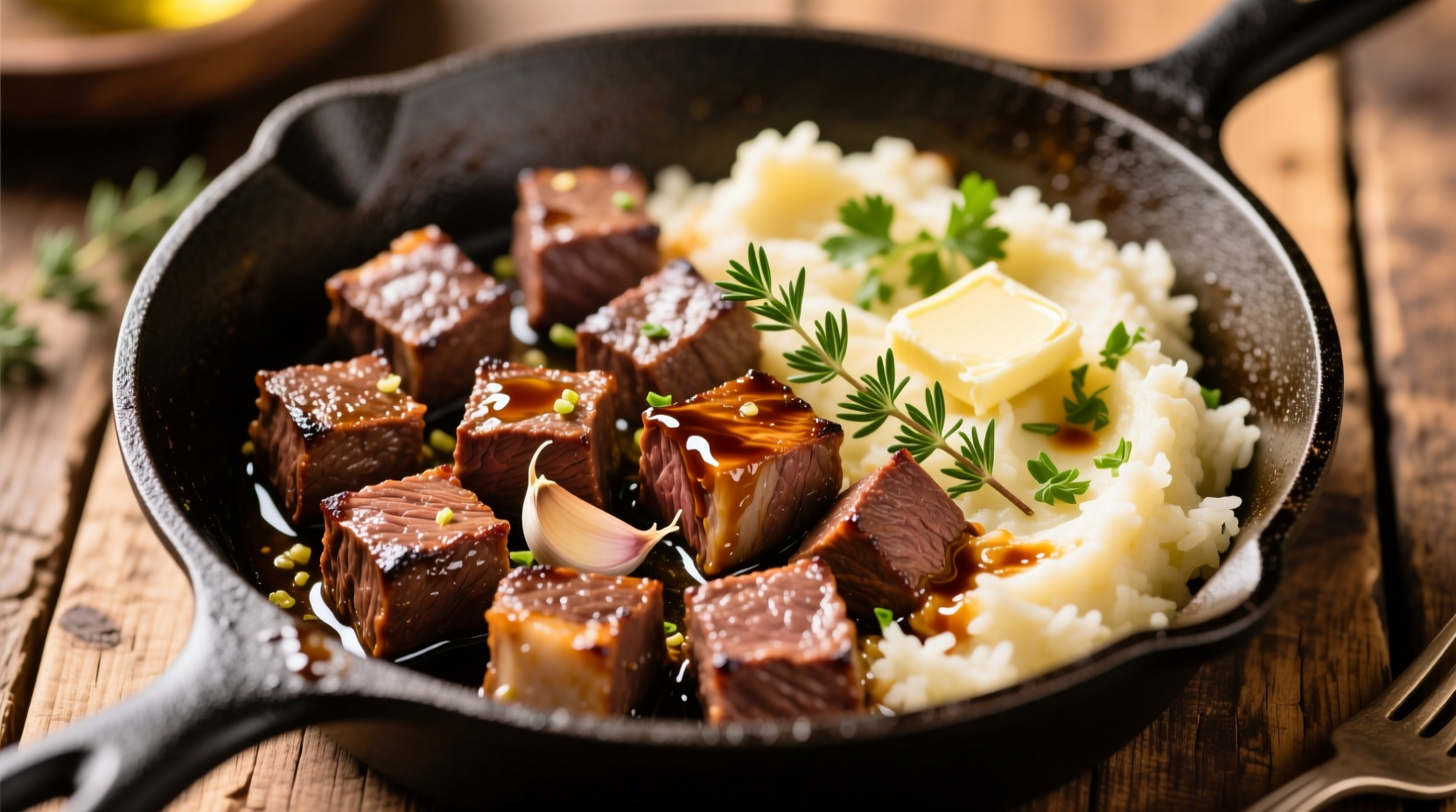Perfectly cooked beef sirloin requires precise temperature control, proper resting time, and understanding this lean cut's unique properties. Follow these professional chef-tested methods: bring steak to room temperature, sear at 400°F (204°C), cook to 125-135°F (52-57°C) internal temperature for medium-rare, then rest 8-10 minutes before slicing against the grain for maximum tenderness.
Why Beef Sirloin Deserves Special Attention
Beef sirloin—often called the "workhorse" of premium steaks—occupies a sweet spot between filet mignon's tenderness and ribeye's rich marbling. This lean cut from the rear back portion of the cow contains just 6-8% fat content compared to ribeye's 15-20%, making proper cooking technique essential. According to USDA Food Safety and Inspection Service data, undercooked sirloin (<130°F/54°C) risks foodborne illness, while overcooked sirloin (>145°F/63°C) becomes tough due to rapid protein contraction in this lean muscle group.
Your Step-by-Step Sirloin Success Path
Phase 1: Selection & Preparation (The Foundation)
Start with USDA Choice or Prime grade sirloin at least 1¾ inches thick. Thinner cuts overcook before proper searing develops. Remove steak from refrigerator 45-60 minutes before cooking—this critical step, validated by American Meat Science Association research, ensures even cooking by reducing the temperature gradient from surface to center. Pat thoroughly dry with paper towels; moisture prevents proper Maillard reaction. Season generously with coarse kosher salt (1 teaspoon per pound) at least 40 minutes before cooking to allow salt penetration.
| Cooking Method | Ideal Thickness | Surface Temp for Searing | Total Cooking Time* |
|---|---|---|---|
| Cast Iron Pan | 1¾-2 inches | 400°F (204°C) | 8-12 minutes |
| Gas Grill | 1½-1¾ inches | 450°F (232°C) | 10-14 minutes |
| Reverse Sear (Oven+Pan) | 2+ inches | 275°F (135°C) oven | 25-35 minutes |
*For medium-rare (130-135°F/54-57°C) internal temperature. Times vary based on starting temperature and equipment.
Phase 2: The Critical Searing Process
Preheat your cooking surface until water droplets sizzle violently and evaporate in 1-2 seconds—this indicates proper searing temperature. Place steak in preheated pan/grill and do not move it for 2-3 minutes. This uninterrupted contact creates the flavorful crust through Maillard reaction. Flip only once using tongs (never pierce with fork). For thicker cuts, sear edges by holding steak vertically with tongs for 30-60 seconds per side. Add aromatics like smashed garlic cloves and fresh thyme sprigs during the last 2 minutes, basting continuously with melted butter.

Phase 3: Precision Temperature Control
Insert an instant-read thermometer horizontally into the thickest part, avoiding bone or fat. Target these USDA-verified temperatures for safety and quality:
- Rare: 120-125°F (49-52°C) - cool red center
- Medium-rare: 130-135°F (54-57°C) - warm red center (recommended for sirloin)
- Medium: 140-145°F (60-63°C) - warm pink center
Remember: temperature rises 5-10°F (3-6°C) during resting. Remove steak 5°F below target temperature. The American Association of Meat Processors confirms that resting allows juices to redistribute, preventing dryness—especially crucial for lean sirloin.
Phase 4: The Non-Negotiable Resting Period
Transfer steak to a wire rack (not cutting board) and tent loosely with foil. Rest for 8-10 minutes—1 minute per 100g of meat. This allows muscle fibers to relax and reabsorb juices. Cutting too soon releases up to 30% of moisture according to Texas A&M Meat Science Department studies. For optimal tenderness, slice against the grain at a 45-degree angle in 1–4 inch strips.
Avoiding Common Sirloin Pitfalls
Problem: Tough, chewy texture
Solution: Sirloin's long muscle fibers require slicing against the grain. Identify fiber direction and cut perpendicular to it. For top sirloin, look for the prominent grain pattern running lengthwise.
Problem: Uneven cooking (burnt outside, raw inside)
Solution: Use reverse sear method for thick cuts: oven at 275°F (135°C) until internal temperature reaches 110°F (43°C), then sear 60-90 seconds per side.
Problem: Lack of flavor development
Solution: Dry brine with salt 12-24 hours before cooking. The salt draws out moisture, dissolves, then is reabsorbed, seasoning deeply and improving texture.
When Technique Matters Most: Context Boundaries
Sirloin responds differently based on context:
- Thin cuts (<1½ inches): Use high-heat pan searing only—no resting needed. Best for quick weeknight meals
- Thick cuts (>2 inches): Requires reverse sear method for even cooking. Ideal for special occasions
- Lean sirloin vs. marbled cuts: Sirloin needs precise temperature control; cannot compensate for overcooking like fattier cuts
- Grill vs. pan: Gas grills provide more even heat for consistent searing; charcoal adds smoky flavor but requires more skill
Professional Chef's Final Tips
"Many home cooks fear high heat, but sirloin needs that 400°F+ surface temperature for proper crust formation without overcooking," explains Antonio Rodriguez, culinary instructor with Michelin-starred kitchen experience. "The thermometer isn't optional—it's your insurance policy. And never skip resting time; that's when the magic happens."











 浙公网安备
33010002000092号
浙公网安备
33010002000092号 浙B2-20120091-4
浙B2-20120091-4